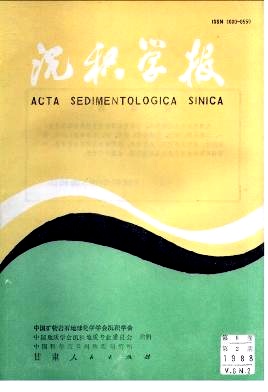|
[1]
|
Atterberg, A. 1912,Die mechanische Bodenanalyse and die Klassifikation der Mineralboden SchWedens, Int. Mitt, f. Bodenkunde, No.2, p.312-342. |
|
[2]
|
Baak, J.A. 1936,Regional petrology of the Southern North Sea. Diss. Univ.Leiden;Wageningen (Veeman&Zonen). |
|
[3]
|
Behre,IC.-E.&Dorjes, Irion,G.1984, Ein datierter Sedimentkern aus dem Holozan der sudlichen Nordsee In "Probleme der Kustenforschung im sudlichen Nordseegebiet" Band 15, 135-148. |
|
[4]
|
Biscaye, P. E. 1964, Am. "Mineralogist, No.49, p.1281-1289. |
|
[5]
|
Biscaye, P.E. 1965, Geol. Soc. Am. Bull.,No.76, p.803-832. |
|
[6]
|
Crommelin, R.D. 1940, Tijdschr. Kon.Nederl.A ardr. Gen.,No.57, p.347-361. |
|
[7]
|
Groot, A.J.De 1964, Dev. in Sedimentol.,No.l p.93-100. |
|
[8]
|
Eisma, D.1981, Spec. Publs. Int. Ass. Sediment.,No.S, p.415-428. |
|
[9]
|
Forstner, U.&Reineck, H.-E. 1974 Senckenbergiana marit.,No.6(2),P.175-184. |
|
[10]
|
Gadow, S.&Scafer, A.1973,Senckenbergiana marit.,No.5, p.165-178. |
|
[11]
|
Irion,G.&Schwedhelm, E. 1983, Heavy metals in surface sediments of the German Bight and adjoining areas, Internat. Conf. "Heavy Metals in the Environment", Heideberg Sept.,1983, p.889-891,Edinburg (CEP Consultants Ltd.). |
|
[12]
|
McCave, I.N.1973, Mud in the North Sea, In: Goldberg, E.D.Hrsg.:North Sea Science, p.75-100, Cambridge, Mass.,London, Engl. |
|
[13]
|
Mehra, O.P.&Jackson, M. L. 1960, Clays and Clay minerals, Proc. th Nat.Conf. No.7, p.319-327. |
|
[14]
|
Pratje, O. 1931,Biol.Anst.Helgoland,No.18. |
|
[15]
|
Postma, H. 1961,Netherl.J.Sea res.,No.l, p.148-190. |
|
[16]
|
Postma, H. 1981,Mar. Geol. No.40, p.199-213. |
|
[17]
|
Reineck, H.-E.&Gutmann, W.F.&Hertweck, G.1967, D as Schlickgebiet sudlich Helgoland als Beispiel rezenter Schelfablagerungen, Senckenbergiana lethaea, 48 (3/4). |
|
[18]
|
Reineck, H.-E.&Dorjes, J.&Gadow, S.&Hertweck, G.1968,Senckenber-giana lethaea, No.49 (4),p.261-309. |
|
[19]
|
Schwedhelm, E.&Irion, G.1983, Heavy metal distribution in tidal f lat sediments of the German part of the North Sea, From; International Conferece"Heavy Metals in the Environment一Heidelberg September 1983", CEP Consultants Ltd.,Edinburg, UK一1983, p.888-891. |
|
[20]
|
Schwermetalle一Bioelemente in den Nordseewatten and der Jade and dieTonmineralverteilung in den Sedimenten der sudostlichen Nordsee, Doctor Dissertation. |
|
[21]
|
Straaten, L.M.J.U. Van 1954, Leidse Geol. Meded.,No. 19, p.1-110. |
|
[22]
|
Straaten, L .M.J.U.V an&Kuenen, P.H. 1957, Geol, en Mijnbouvv, N.S.,No.19, p.329一354. |






 DownLoad:
DownLoad: